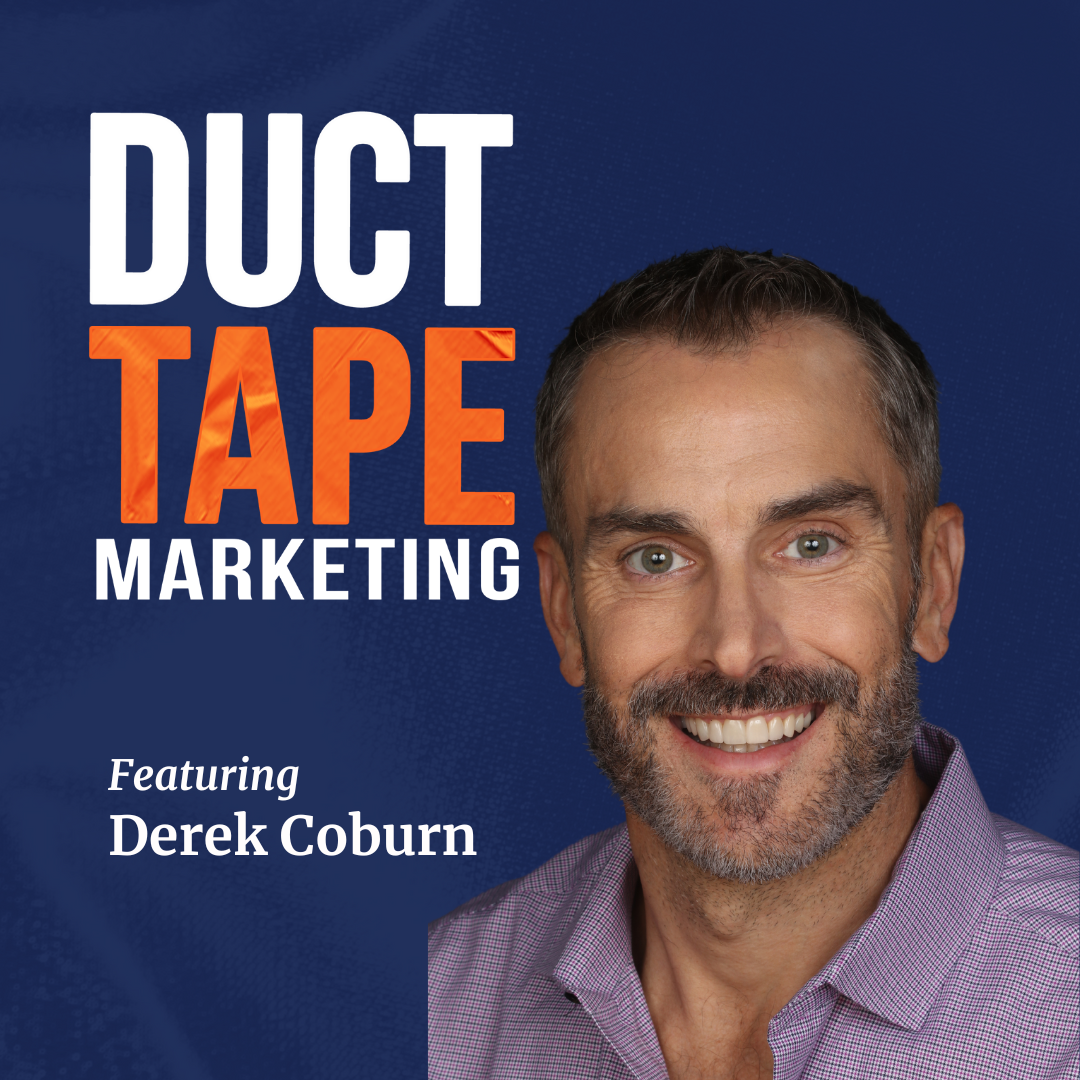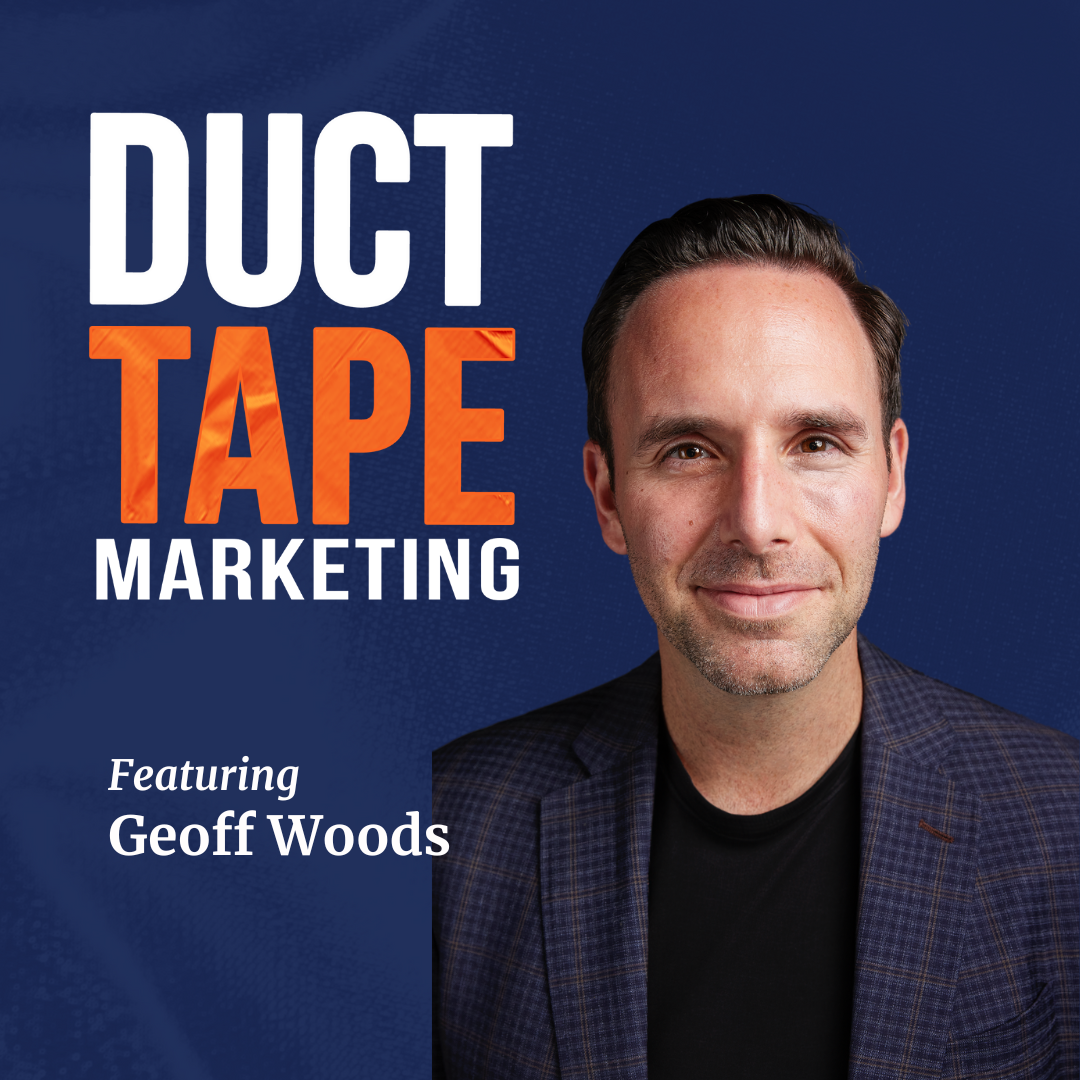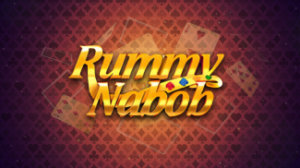Why It’s Time to Retire the Idea of Retirement with Derek Coburn written by John Jantsch read more at Duct Tape Marketing
 Episode Summary
Episode Summary
In this episode of the Duct Tape Marketing Podcast, host John Jantsch sits down with Derek Coburn — seasoned financial advisor, entrepreneur, and author — to challenge the traditional notion of retirement. With insights from his new book, Let’s Retire Retirement, Derek outlines why the current retirement model is outdated and how a mindset shift can help people live more fulfilled lives both now and later. Whether you’re a business owner, working professional, or planning for what’s next, this episode offers a fresh framework for thinking about purpose, wealth, and work-life design.
Listen to the Episode
About Derek Coburn
Derek Coburn is a financial advisor with over 25 years of experience and the co-founder of Cadre, a curated community of CEOs and entrepreneurs. He’s the bestselling author of Networking is Not Working and a sought-after speaker on networking, wealth strategy, and purpose-driven leadership. In his latest book, Let’s Retire Retirement, he reframes what it means to live a meaningful and financially secure life—one that doesn’t hinge on the outdated idea of “stopping work at 65.”
Key Takeaways
- The modern concept of retirement is less than 150 years old—and it no longer matches today’s realities.
- Living longer and more actively means we need to redefine what “working years” and “rest years” really mean.
- Deferring joy for some idealized retirement later can lead to disappointment—the time to live fully is now.
- Working longer can dramatically reduce the pressure to save aggressively in early and mid-career years.
- Even entrepreneurs fall into the trap of deferring dreams until “after the exit”—a dangerous delay tactic.
- Small shifts in financial strategy (like converting to Roth 401(k)) can have big long-term impacts.
Episode Highlights and Timestamps
- 00:01 – Introduction and guest welcome
- 01:00 – The true history of retirement: Bismarck, FDR, and outdated milestones
- 03:00 – Why 25–30% of retirees are going back to work
- 05:00 – The concept of redefining retirement for personal fulfillment
- 07:00 – Entrepreneurs and the myth of “I’ll do it after I exit”
- 09:30 – Real-world case study: Jay Baer’s pivot from agency to tequila influencer
- 11:00 – Financial math: how working longer cuts required savings dramatically
- 13:00 – The 401(k) rethink: taxes, Roth conversions, and planning smarter
- 15:00 – Parenting, presence, and valuing your $50,000 moments
- 17:30 – The mindset shift needed to fully embrace this new paradigm
- 19:30 – Grandparenting, legacy, and how to stay connected across generations
- 20:30 – Where to learn more and connect with Derek
Learn More and Connect with Derek Coburn
To dive deeper into Derek’s thinking and explore tools to reframe your financial future, visit:
- DerekCoburn.com/neverretire – Use the calculator to reimagine your retirement math
- Cadre – Explore Derek’s community for high-performing entrepreneurs
- Let’s Retire Retirement – Get the book
- Connect with Derek on LinkedIn
- Follow Derek on Twitter
Enjoyed This Episode?
If you liked this conversation, be sure to subscribe to the Duct Tape Marketing Podcast for more candid discussions with authors, entrepreneurs, and thought leaders shaping how we work and live. Share this episode, leave a review, and let us know what part of Derek’s perspective resonated most with you.
John Jantsch (00:01.085)
Hello and welcome to another episode of the Duct Tape Marketing Podcast. This is John Jantsch. My guest today is Derek Coburn. He’s a seasoned financial advisor and entrepreneur with over 25 years of experience. He is the co-founder of Cadre, an exclusive community of CEOs and entrepreneurs, which he launched with his wife, Melanie. Derek is also the author of the bestselling book, Networking is Not Working. And we’re going to talk about his latest book today.
Let’s retire retirement, how to enjoy life to the fullest now and later. So Derek, welcome back to the show.
Derek Coburn (00:34.85)
Thanks, John. So happy to be here.
John Jantsch (00:36.797)
So I know you’ve done some research on this, so I’m just going to ask you, like, where did retirement come from? Did people in the Middle Ages retire, or is that like a kind of a new thing?
Derek Coburn (00:45.838)
Yeah, it’s barely 100 years old. It first started in 1889. It was the first social program developed in Germany by a chancellor named Otto von Bismarck. And they selected the age of 70 at the time because that was the age that most people died. They brought it down to 65 about 10 years later.
FDR when he was setting up social security in 1935, thought it sounded like a good number at a time when life expectancy in this country was 71. So, you know, it’s barely over 100 years old and it was certainly never intended to be this thing that you, you know, did for 30 plus years.
John Jantsch (01:28.883)
So is that, is that, is, was that an alternate title of your book? Work till you die?
Derek Coburn (01:35.328)
I’m not sure, you know, I think that might not have gone over as well. Dan Pink like five or six years ago told me, like, I think a good title for your book would be How to Never Retire. And I thought it’s a good title, but I told him that I think that there’s just not enough people, certainly not then, that were raising their hand and knew they already did not want to work. I felt like I needed to have a title that was more inclusive to bring people in and with, you know, with dangling a carrot and then kind of trick them once I got their attention.
John Jantsch (01:38.683)
You
John Jantsch (02:05.235)
Yeah. Well, and we’ll get back to how you’re defining retirement because that’s key to this. you know, as a financial advisor, mean, most financial advisors spend a whole lot of time talking about people saving for retirement. So how, I mean, has that been something you’ve had to kind of correct in your own advising or is that something that’s never really been a part of your MO?
Derek Coburn (02:27.694)
You know, I’ve just been doing this. And the reason that I wrote decided to write this book in 2017 is I realized that collectively the best thing that I had done for the majority of my clients is help them come to the realization that they weren’t going to be happy sitting around doing nothing for 30 years. And I started off writing this book with the intention to use it as a business card to attract more high net worth clients that I might want to work with. But I sold my practice to a private equity company in 2019 and
got some flexibility and then COVID happened. I kind of set it aside for a number of years and I feel like now, because I’m not looking to grow that practice, I was able to write a book that would appeal to a broader audience, be helpful to a broader audience. to your point, financial advisors are not saying, do you want to retire? They’re saying, what age do you want to retire? And everyone is being opted into this concept and they’re just going along with it, I think, without really questioning whether it’s going to make sense for them or not.
John Jantsch (03:27.251)
Yeah. And of course, one variable to this whole thing is that we’re all living longer, right? mean, 65, you you were maybe incapable of doing a whole lot more, you know, a hundred years ago in the workplace, but right. now, you know, well, it’s Warren Buffett, like 90. You know, I mean, so, so how does that factor into this idea that, you know, if you retired 65, I mean, you are probably looking at 25, 30 years.
Derek Coburn (03:38.765)
Yeah.
Derek Coburn (03:44.429)
Yep.
Derek Coburn (03:54.22)
Yeah, well, you’re seeing this, this on, on retirement movement that’s starting to happen. Brian Clark is doing some cool things around it with his new project further, but essentially 25 to 30 % of people who have, who have traditionally retired or going back to work. Some of them are doing it for the money, but most of them are doing it because they missed the connection, the purpose, the ability to, to, to contribute in, in a meaningful way.
And I think there’s just a lot of people that have gone along with this. They were told if they made sacrifices and did things a certain way that they were going to be rewarded. They were going to be rewarded with this free time and this happiness and this ability to do whatever they want to do. it’s not playing out the way that they thought it was going to.
John Jantsch (04:36.925)
Well, and even worse, maybe they worked themselves to the bone, worked more hours, sacrificed their family with the promise of what comes after, right? And then when they got there, it didn’t come, right?
Derek Coburn (04:45.518)
Yeah.
Derek Coburn (04:49.802)
Exactly. Yep. Like the arrival fallacy, this promise that it would be a certain way and then it’s not.
John Jantsch (04:55.719)
Yeah. So that’s a big part of your book. And that’s why I saying, I think you’re saying let’s retire retirement, but you’re also redefining retirement. Aren’t you a little bit in this and a big part of the book is like, let’s have a personally fulfilling life right now.
Derek Coburn (05:10.882)
Yeah, I think that a lot of people just don’t realize how well the math works out. So I’m saying to work longer, but I’m also saying that by recognizing that you’ll probably work longer, it should translate into you not feeling like you have to work a lot of extra hours now when maybe your kids need you more, or maybe when you want to travel or date your spouse more aggressively. It’s more about taking advantage of the fact that this income will be coming in in the future.
And it’s sort of sponsoring the idea that you can do these other things and invest in these other relationships and skills and experiences in a way that maybe you didn’t think you were able to when you wanted to stop at 65.
John Jantsch (05:48.243)
Your next book, I’m sorry I got distracted there, Derek, your next book is Date Your Spouse More Aggressively.
Derek Coburn (05:54.478)
That’s maybe like the second or third time I’ve said that out loud, but.
John Jantsch (06:01.407)
So, you know, there’s a book I read a few years ago that I thought made a lot of sense. I I might get the title wrong. was something like Die Broke, but the idea was that a lot of people also just hang on to all this money that they, you know, squirrel away for retirement instead of like giving it to their kids or their grandkids to send them to college now. You know, like my children when they’re 55 probably don’t need my money.
as, as much as they might now. And, I think that idea of take that, you know, take that vacation now, you know, do that big trip, you know, now, because when you’re 75, 80, maybe you don’t go to China or you don’t go to Vietnam or something, because it’s hard.
Derek Coburn (06:40.724)
Yeah, you I think you’re referring to Die with Zero by Bill Perkins and really good book, you know, and I think that one area where maybe we differ a little bit is he’s making the case that you’re going to enjoy a trip to Europe more when you’re 35 than when you’re 50. You’re not going to be as physically capable to do some of these things, but I’m of the belief, and there’s a lot of science that backs this up, to where if you’re taking better care of yourself now, if you’re going on more trips now, if you’re
John Jantsch (06:43.813)
Yeah, that’s it. That’s right. That’s right. Yeah. Yeah.
Derek Coburn (07:09.29)
If you’re more active now, you’re more likely to be able to continue doing those things in the future. It’s really the people that aren’t doing those things that I think are going to have a harder time with
John Jantsch (07:14.803)
Yeah, yeah. Yeah, I’m actually an avid bike rider and I’m doing a triathlon this year, you know, and I’m 65 and my fear is if I stop doing those, I won’t be able to do it anyway.
Derek Coburn (07:26.499)
Yeah.
Derek Coburn (07:31.424)
I think it’s a valid fear and it’s a fear well backed by science that agrees with you.
John Jantsch (07:35.953)
Yeah. I do have to let the cat out of the bag there. The triathlon I’m doing is a run fish drink. So not exactly, not exactly the same thing, but so you have obviously in your financial practice, I mean, that’s, that’s like literally your research lab, right? To some degree, but then also cadre, you know, you work with a lot of high powered CEOs, folks that run their own companies in that that are
Derek Coburn (07:46.85)
That’s a good one. Yeah.
John Jantsch (08:05.117)
probably looking at, you know, they’re not looking at the pension plan, you retirement. How has that kind of informed some of your views?
Derek Coburn (08:09.325)
Yeah.
Derek Coburn (08:12.738)
What’s interesting is even the people that sort of know that they’re never going to stop working, they’re still living their life like they’re going to. They’re still making financial decisions and choices based on the fact they’re going to retire at 65 like everyone else. So for example, when they meet with their financial advisors, they’re saying, like, what do I need to do to stop working at 65 and to stop doing this? And I would say that with entrepreneurs and business owners, sometimes it’s not
John Jantsch (08:28.465)
Run.
Derek Coburn (08:42.262)
retirement, but it’s I’ll get around to doing X once I have an exit, once I bring in a CEO, once I bring in someone else. And I think that that it’s the same story. It’s the it’s justifying deferring maybe things in relationships that deserve more of your attention right now in the name of getting around to it once you have a certain amount of money or a certain financial experience or exit from your business.
John Jantsch (09:04.637)
Yeah, yeah.
Are you finding, you know, I think some, to some degree, we’re talking about just extending how long you work, but what about a major pivot? You know, it’s like, I’ve, I’ve been doing this for 30 years, done what I want to do here. I want to go do something different. I’m not going to retire, but I’m going to do something totally different. Maybe something that I think is seems totally cool or that I’m more prepared to do today.
Derek Coburn (09:28.59)
Yeah, like so I have an entire chapter. It’s the longest chapter in my book that’s that’s that are case studies about people that have that have taken this and they’ve gone into a lot of different directions. And one one maybe that might be fun to share with you is just our mutual friend, Jay Bear, who I spoke with for the book and Jay sold his agency, I think early on in covid and was sitting around and decided he wanted to start making videos about tequila.
John Jantsch (09:43.475)
Mm-hmm.
Derek Coburn (09:54.73)
And, you know, so he went from that to really leaning into one of his passions and one of his interests. And after sharing the case study, I have a callback later in the book to say, look, I mean, if J. Bear can make a lot of money, you know, drinking tequila and talking about it on video, then I’m sure that there’s a lot of different cool ideas out there that are waiting for you as well.
John Jantsch (10:17.489)
Yeah, that also necessitated some amount of travel to some places he hadn’t spent time into. I think it really…
Derek Coburn (10:25.484)
I think he’s mostly hurt by the fact that more people recognize him as the tequila guy than the keynote speaker.
John Jantsch (10:32.595)
He’s still doing a fair amount of that too. talk about some of the changes, maybe they’re not changes, but if somebody is going to read you, pick up your book and, and really the ideas in it just resonate. What are some of the changes that you they’re probably going to encounter or, maybe it’s just mindset.
Derek Coburn (10:54.57)
Yeah, one of the first things that I want to want to point out is just the financial impact it’s going to have. And so I share an example in the book about a fictitious guy named Tony who’s 45 years old. makes one hundred and fifty thousand a year and he has one hundred and fifty thousand dollars saved up for retirement. You could call it two fifty five hundred, one hundred thousand, whatever you want it to be. But if Tony wants to have a traditional retirement at sixty five, he has to save about twenty five hundred dollars per month in order to make that happen, which is.
20 % of what he’s bringing home, which is a non-starter for most people. That would mean that you are saving about what you’re living on. If Tony decides to work until he’s 75 instead of 65, the amount he has to save on a monthly basis goes from 2,500 down to $110 per month. It goes down by 96%. And even if he doesn’t want to work until he’s 75, he wants to go until he’s 70, it goes down 75 % to 600 bucks a month.
John Jantsch (11:40.136)
Mm.
Derek Coburn (11:50.518)
And so we’ve all seen these articles that make us feel really dumb about how we should have saved more when we were 22 years old and taking advantage of compounding interest. And while a lot of us didn’t do that, and even if we would have done that, we weren’t really earning a lot of money at that time compared to what we’re earning now. Anyways, there aren’t a lot of articles talking about the benefits of having the advantage of compounding interest by letting it sit in for an extra five or 10 years longer.
Immediately, I want people to know, I want people to see they have a lot more money and a lot more time that they can spend differently once they realize, you know, I’ll probably be doing this a little bit longer than what I was originally thinking.
John Jantsch (12:28.657)
Yeah, I mean, doesn’t even factor in, assuming it’ll be there for a few more years. Doesn’t even factor in the escalation to social security, right? Yeah.
Derek Coburn (12:36.022)
Yeah, exactly. I’ll tell you like something maybe more specifically 401k plans became all the rage, mainly because the idea that I can put money away on a tax free basis while I’m working get a tax deduction based on my current tax bracket. And when I pull it out, I won’t be working. So I’ll be at a lower tax bracket. And that seems like a no brainer to anyone when you lay it out like that. But once
John Jantsch (12:42.259)
Mm-hmm.
John Jantsch (12:56.315)
Over. Yeah.
Derek Coburn (13:02.166)
someone realizes there’s a good chance they might be working into their 70s and they’re going to be taking required minimum distributions from their 401k plan and they’re still earning an income, then maybe they’re not in a lower tax bracket.
John Jantsch (13:13.331)
Also, also that tax got tax higher bracket
Derek Coburn (13:17.546)
Yeah, maybe this 401k plan isn’t as good of a deal as it seems. without getting too technical here, like an easy fix for that, right, is I think over 90 % of 401k plans right now have the option to convert it to a Roth. And that might be something that people want to do where they’re making their contributions on a post-tax basis. But that’s just one example of maybe how your thinking should change a little bit once you realize you might be working a little bit longer.
John Jantsch (13:22.696)
Grrrr
John Jantsch (13:43.251)
You’ve also missed, you know, I know in our case, we have a 3 % match on the, you know, employer match. So that certainly helps that out a little bit.
Derek Coburn (13:52.406)
Yeah, and I say that’s the place even like even maybe before you work to aggressively build up your emergency reserve fund. If you’re getting a match, probably take advantage of that.
John Jantsch (14:01.233)
Yeah. Yeah. Plus owners, you know, have the ability to profit share into a 401k. So, you know, which I may or may not have taken full advantage of every one of those.
Derek Coburn (14:11.95)
Wow, amazing. Yep.
John Jantsch (14:17.455)
Is there any lifestyle change? Because I am here, I’m just going to work longer, right? So how does that affect my spouse? How does that affect other lifestyle things? that something that’s going to be realistic in that regard?
Derek Coburn (14:37.39)
I’ll give you like an even short-term example of how it’s playing out for me and some people I know. So I have a 15 and a 12 year old and I spend a significant amount of time with them, with my wife, with my friends compared to most people I know. Yeah, exactly. And one of the driving factors behind that is that when my youngest moves out of the house in five and a half years,
John Jantsch (14:52.115)
as your Instagram account will attest.
Derek Coburn (15:05.006)
I’m going to be ready to turn it up a notch. I’m going to be ready to work even more than I’m working now. And just knowing that I’m going to have this income coming in in five or six years really frees me up and liberates me to lean into spending as much time with them as possible. And I think that’s just the more shorter term, more abbreviated version of how it works in my mind for thinking about what I’m going to be doing 20, 30 years from now.
John Jantsch (15:29.713)
Are you doing any coaching workshops, anything outside of the book?
Derek Coburn (15:35.2)
Yeah, I’m not. know, I’m open to it. I’m interested in it, but I feel really good about where I’m where I’m going right now in this message that I have to share. you know, we’ll see where it goes. I’ve been a lot of people ask me, but I’ve just never.
John Jantsch (15:47.443)
Because I could, yeah, yeah. And because I think one of the challenges, it’s not necessarily just a, implement these five steps in this framework. you’ll be, I mean, it’s really a mindset first, right? I have to accept this idea because I’ve spent my whole life thinking a different idea.
Derek Coburn (16:05.71)
Yeah. Yeah. mean, look, and I’ll give you an example of that. I mean, I have clients who are in their 70s who have significant assets, right? I’ll say client A has, client A and client B both have $15 million. Client A and client B could spend their money as much as they want from now until they pass away and they’re going to be fine. Client A is working a job making about $100,000 $150,000 a year.
doing things the way they want to do on their terms, how they want to do it, and client B is not doing anything at all. Client A is spending their money in so much more of a carefree way. I think mainly because they know they’re still making money, that’s still coming in. They haven’t entered that phase where, my gosh, all I’m doing is taking out right now. So I’d better be.
John Jantsch (16:51.635)
Or or or watching the news or the stock market to see what happened to my retirement account, right?
Derek Coburn (16:57.038)
Yeah, exactly. But I agree with you. mean, it’s, you know, even again, like even the people that that know they’re going to work longer, they haven’t really done the software update to to, you know, make a change to how they’re living their lives.
John Jantsch (17:10.407)
Yeah. Yeah. So are there first steps? mean, is there like, how do you, how do you get people rethinking their retirement plans?
Derek Coburn (17:18.956)
Well, you know, it’s a couple of ways. One is I shared the example about how they now have more money just by realizing, and that usually makes people feel a lot better about leaning into it. gosh, yeah, I’ll easily work an extra couple of years. I would say that
John Jantsch (17:33.777)
Are there, there calculators? mean, have you developed calculators that could actually allow somebody to put that, those numbers in? Yeah. Okay.
Derek Coburn (17:39.168)
Yeah, I have a calculator on my website, which I can share with you. It’s DerekCoburn.com forward slash never retire. And it kind of allows people to enter in their own numbers and, plug in and see the difference that it would make. But, but it’s that, but it’s also combined with, with maybe, you know, appealing to their fears and their concerns. So one of the, one of the examples I share in the book is when my boys were 10 and five or 10 and seven, we had a nighttime routine where we would take turns.
John Jantsch (17:48.349)
Good, good. Yeah.
Derek Coburn (18:07.606)
my wife and I laying in bed with them for 10 or 15 minutes and helping them settle down and go to sleep. And it’s really nice when they’re that little. and I caught myself with my oldest. I’m like, this is not going to last much longer. And here I am most nights wishing it would hurry up and end, hurry up and fall asleep. I’m not telling him this, but I’m saying it to myself. I want to go watch a show. I want to go finish this work, respond to this email. And I really worked hard. was like, I want to appreciate this and value it more.
John Jantsch (18:23.187)
Yes, yes, yes.
John Jantsch (18:28.659)
Right, right, right.
Derek Coburn (18:36.046)
So I had this thought, you what if a company invents a time machine? And 20 years from now, they offer me the opportunity to stroke a check, to go back in time for one night with the 10 year old version of my kid for one nighttime routine, one nighttime snuggle, what would I pay for that? And I called it 50 grand. I’d pay more than that, I know that 65 year old me would pay 50 grand in a heartbeat to do that. And I think we’re just having…
parents are having these $50,000 moments happening all the time that we’re taking for granted. And I think me personally, I’m gonna really miss my kids when they’re gone. And I know there’s gonna be a new phase. I know that it’s gonna be good, hopefully. I know that our relationship will evolve, but I really don’t think that parents are spending the amount of time that they’ll wish they would have spent with their kids.
John Jantsch (19:26.523)
Yeah, it’s interesting. I’m in a different phase and then I, you know, I have grandchildren now and I will tell you that, you know, college is a different phase. But, you know, post college is really, I mean, we, we spend, you know, they’re all over the country now and we spend a fair amount of time, you know, with them as individual family units. And, you know, I will say that’s pretty cool as well.
Derek Coburn (19:30.648)
Yeah.
Derek Coburn (19:48.376)
Yeah, I see how you’re doing it, man. I have a lot of respect and I have no doubt that you guys are just amazing grandparents.
John Jantsch (19:55.859)
Well, that’s one that there’s, you know, just like parenting, there’s no like course or book that you can read that will actually allow you to know how to do it. So making it up every day. Absolutely. Well, Derek, I appreciate you taking a few moments to stop by. It’s always great to catch up with you. Is there someplace you’d you already mentioned Derek Coburn.com? Is there anywhere else you’d mentioned that people might want to connect with you or find more about the book?
Derek Coburn (20:06.786)
First time that we’re all doing this, yeah.
Derek Coburn (20:21.676)
Yeah, that’s great. Like I’ve already been writing and elaborating on a lot of the ideas from the book that aren’t in the book on my website. I’m really just looking forward to starting a movement and seeing how far we can take this thing. So I appreciate you having me here and it’s always wonderful to spend the time with you.
John Jantsch (20:32.486)
Awesome.
John Jantsch (20:35.953)
Yeah. Well, again, appreciate you coming by and hopefully we’ll see you one these days out there on the road.
Derek Coburn (20:40.834)
Thanks, John.
Sign up to receive email updates
Enter your name and email address below and I’ll send you periodic updates about the podcast.
 In this episode of the Duct Tape Marketing Podcast, I interviewed Christine Perkett, a veteran entrepreneur and marketing communications expert with nearly 30 years in the field. Christine is the co-founder and CEO of The Nova Method, a PR and communications firm grounded in what she calls an “audience-first strategy,” built for a world shaped by AI, automation, and fractured trust.
In this episode of the Duct Tape Marketing Podcast, I interviewed Christine Perkett, a veteran entrepreneur and marketing communications expert with nearly 30 years in the field. Christine is the co-founder and CEO of The Nova Method, a PR and communications firm grounded in what she calls an “audience-first strategy,” built for a world shaped by AI, automation, and fractured trust. Episode Summary
Episode Summary Purchase the book and email your receipt to book@aileadership.com to receive a bonus PDF of 40 strategic AI prompts.
Purchase the book and email your receipt to book@aileadership.com to receive a bonus PDF of 40 strategic AI prompts. Episode Summary
Episode Summary




